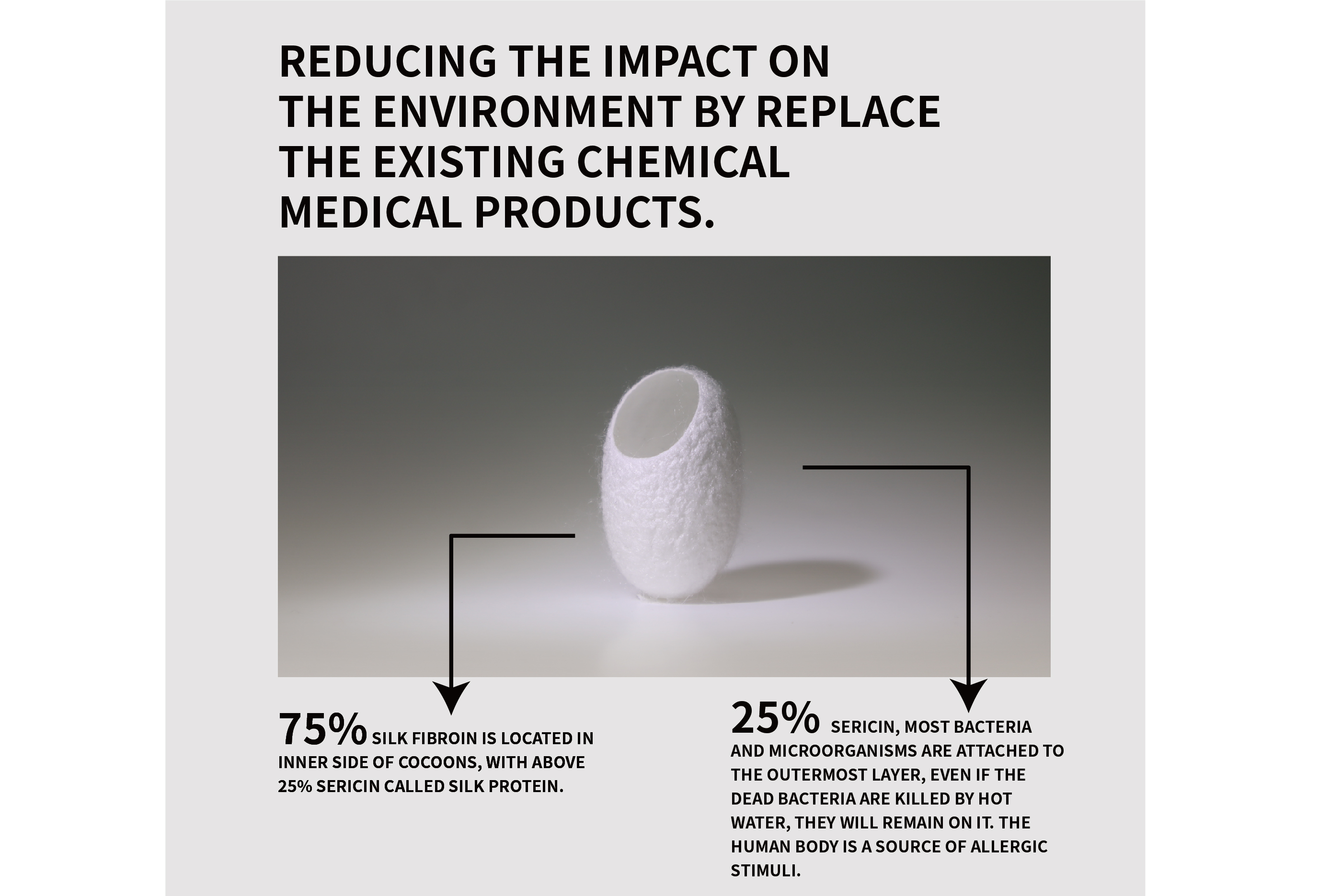1. What is silk protein?
2. What is silk fibroin?
3. The composition of silk fibroin?
4. Silk fibroin repairs wounds really well.
5. Where can silk fibroin be applied?
一、What is silk protein?
Silk protein, as implied by the name, it is a protein extracted from silk. Silk comes from cocoons formed by silkworms.Silk protein is a protein similar to collagen, elastin, keratin, fibroin, sporgin, etc. It is an important part of cocoon silk.
二、What is Silk Fibroin?

Macroscopically, fibroin can be roughly divided into two layers
- Outer layer: Sericin, 19~28% on average
- Inner layer: After degumming, the rest is Fibroin, accounting for 72~81% on average
三、The composition of silk fibroin?

It can be seen from the above that silk fibroin is the main component of silk (at least 72%). Then what about the composition of silk fibroin? It's amino acids! It is rich in 20 kinds of amino acids (including 9 kinds of amino acids necessary for the human body), which is one of the sustainable and natural sources of amino acids.
四、Silk fibroin repairs wounds really well
In 2017, there is clinical trial identified silk fibroin membrane with potential for clinical skin repair and regeneration applications. Because silk fibroin has following ecologically characteristics :- Good biocompatibility,
- Visually observe the healing of skin wounds,
- Maintains a moist environment conducive to wound healing,
- Provides a waterproof surface,
- Prevents bacterial infection,
- Easy to apply and remove,
- Promotes rapid and complete wound healing,
- Rarely causes adverse reactions.
In addition, according to Dr. Amber Chen the CEO of LifeStar, published in the international journal Journal of Bioactive and Compatible Polymers, she pointed out that the foam dressings containing herbal extracts can accelerate wound recovery, and achieve complete wound closure and regeneration within 21 days. Histological analysis of skin tissue showed that the foam dressings produced could promote the creation of thicker, denser and thicker foam dressings.
In fact, silk fibroin induces wound healing by activating different cellular pathways and increasing cell survival, proliferation and migration.
五、Where can silk fibroin be applied?
Silk fibroin is not only applied in wound repair, but also in various fields of biomedicine. Silk fibroin is widely used in biomedical applications, especially so-called regenerative medicine, such as:- Gene therapy、
- wound healing、
- Bone regeneration、
- High Biocompatibility、
- Biological Biodegradability、
- Mechanical strength、
- Aqueous process、
- Drug delivery、
- Biological delivery。
